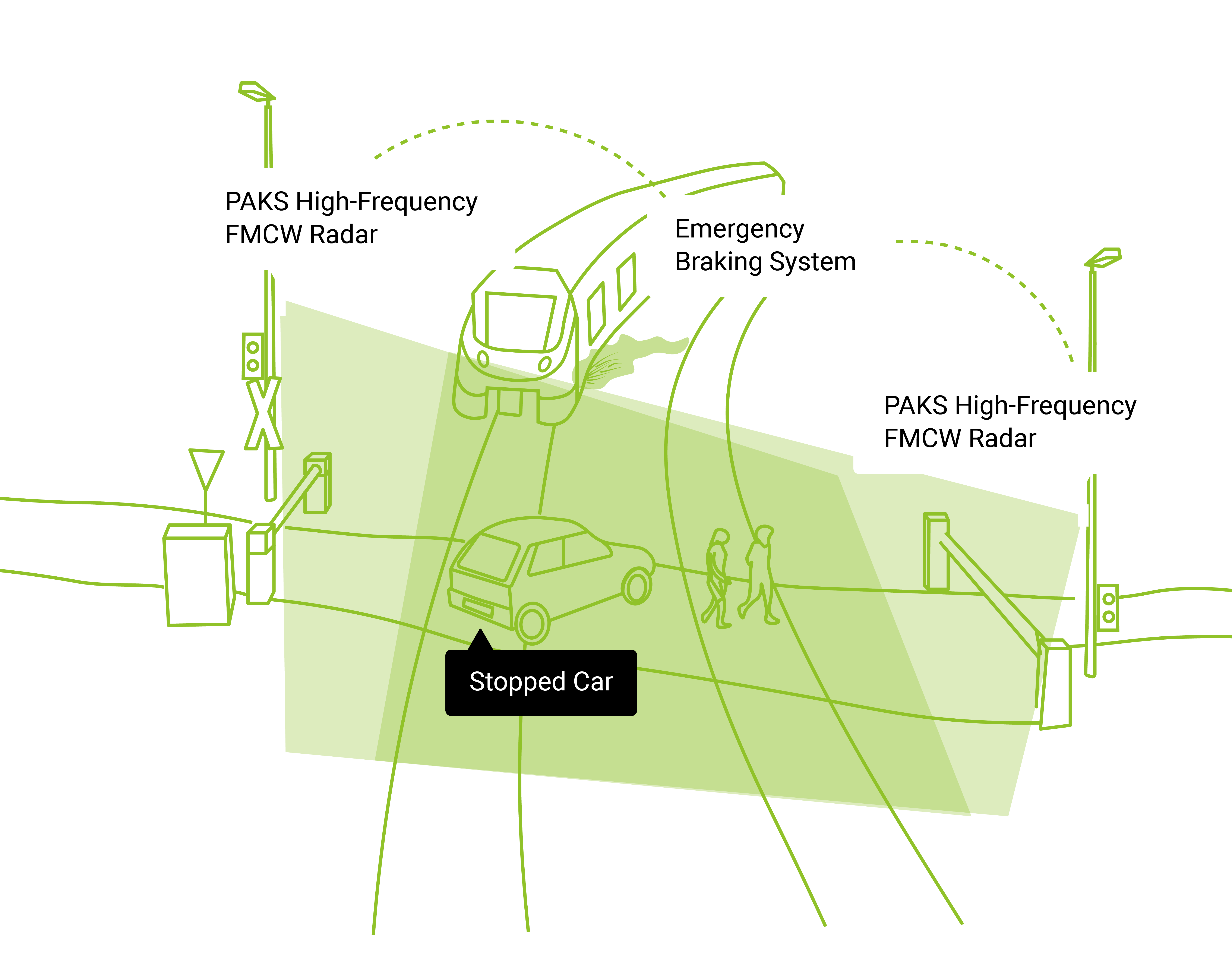AUTOMATED RAILWAYS LEVEL CROSSING MONITORING SYSTEM (PAKS)
The Issue
Railway crossings are utterly important yet dangerous points of contact between the road network and the railway infrastructure network, where serious accidents with fatalities and major material damage continue to occur – rolling stock, infrastructure damage, traffic delays, etc. consequences.
So far, there are two technologies – video surveillance and wheel counting technology – hat offers such solution, yet it’s known now that they both have significant drawbacks:
- Video surveillance technology is not effective in difficult visibility conditions (thick fog, heavy rain or snowfall, sandstorm, etc.),
- Wheel counting technology can detect the fact of a car being stopped only after a certain amount of precious seconds that have already been lost.
Therefore, there is a need for a level crossing monitoring system that controls the situation on the railroads and is able to stop the movement of trains if a vehicle has stopped or a load has spilled on the level crossing. All of the above solutions are expensive, require large human resources, and are not always efficient enough.
The Solution
There is only one solution to the above problem: use a different control material that is not sensitive to visually impaired conditions.
The ideal possible solution is FMCW technology radars operating in the 76-77 GHz band (this frequency band is allocated for railway infrastructure control according to ETSI EN 301 091-3 V1.1.1 (2017-02). With this frequency range radar, it is possible to detect accurately the location of vehicles, people, various objects up to a distance of 80 m.
Our Product
All these reasons lead us to create PAKS – high-frequency FMCW radars that are used to control the level crossing. Our solution is more resistant to adverse visibility conditions.
During the arrival of the train, high-frequency FMCV radars scan the level crossing and analyze the objects in it – their speeds and directions. If any of the objects stop or, after a movement analysis, is unable to exit the level crossing until the scheduled arrival of the train, the train’s emergency braking system is activated to prevent an accident or at least to reduce possible fatalities
Industry
Transportation
Solution Audience
Public Transport Authorities
Key Solution Components
FMCW technology radars operating in the 76-77 GHz band
Signal processing
Antenna solutions
Software (back-office)

Contact Information
Vents Riekstins
Commercialization Expert
+371 29242624
vents.riekstins@edi.lv
